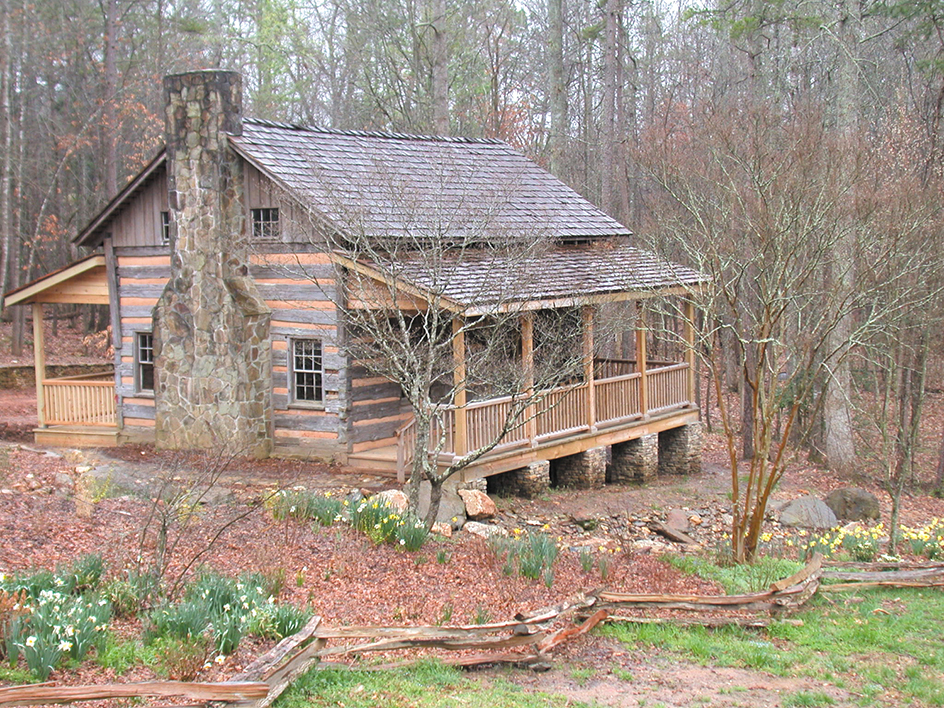Log cabin was one of the earliest dwellings built by European settlers in North America. Log cabins served as a practical form of shelter for people who settled in forest regions and who had few tools. The log cabin became a symbol of the hardships and virtues of frontier life. Many noted Americans, including five presidents—Andrew Jackson, James Polk, James Buchanan, Abraham Lincoln, and James Garfield—proudly claimed being born in such dwellings.

The simplest log cabins were built of round logs with curved notches cut near the ends. Logs on the ground served as a foundation. Above the foundation, each log lay across the logs immediately below it and rested in their notches. In most cases, spaces between the logs were filled with stones or slats of wood and daubed tight with mud in a process called chinking. The roof was usually made of rough boards cut from logs.
People in Europe had been building log cabins for hundreds of years before Europeans came to America. Swedes and Finns made the first log cabins constructed in the New World. They built them beginning in about 1638 in the region near the mouth of the Delaware River. This area covered parts of what are now Delaware, New Jersey, and Pennsylvania. Log cabin construction spread to many other groups of colonists, including English, Scotch-Irish, Welsh, and Dutch settlers. Eventually, log cabin construction spread to most of the wooded American frontier. In Pennsylvania in the 1700’s, German-speaking colonists from Switzerland and eastern Germany made popular a more refined log carpentry. They used shaped logs and special dovetailed notches.
Other groups of settlers built log cabins in many parts of North America. Various types of log cabins were introduced by Russians in Alaska, French farmers in Quebec, French-Canadian fur traders in western North America, Ukrainians in the Canadian Prairie Provinces, Spaniards and Mexicans in highland areas of New Mexico, and Finns in the northern Midwest.
